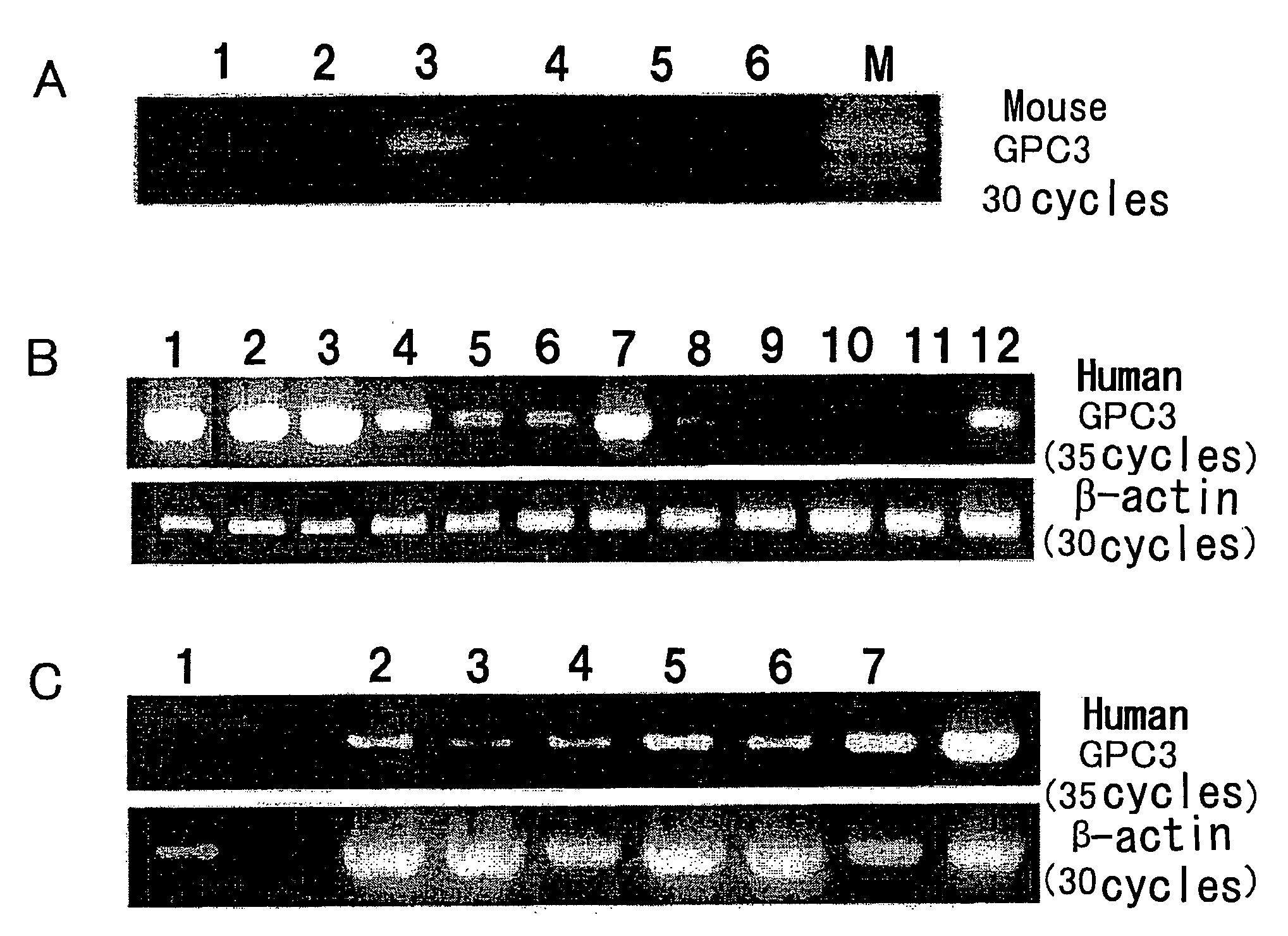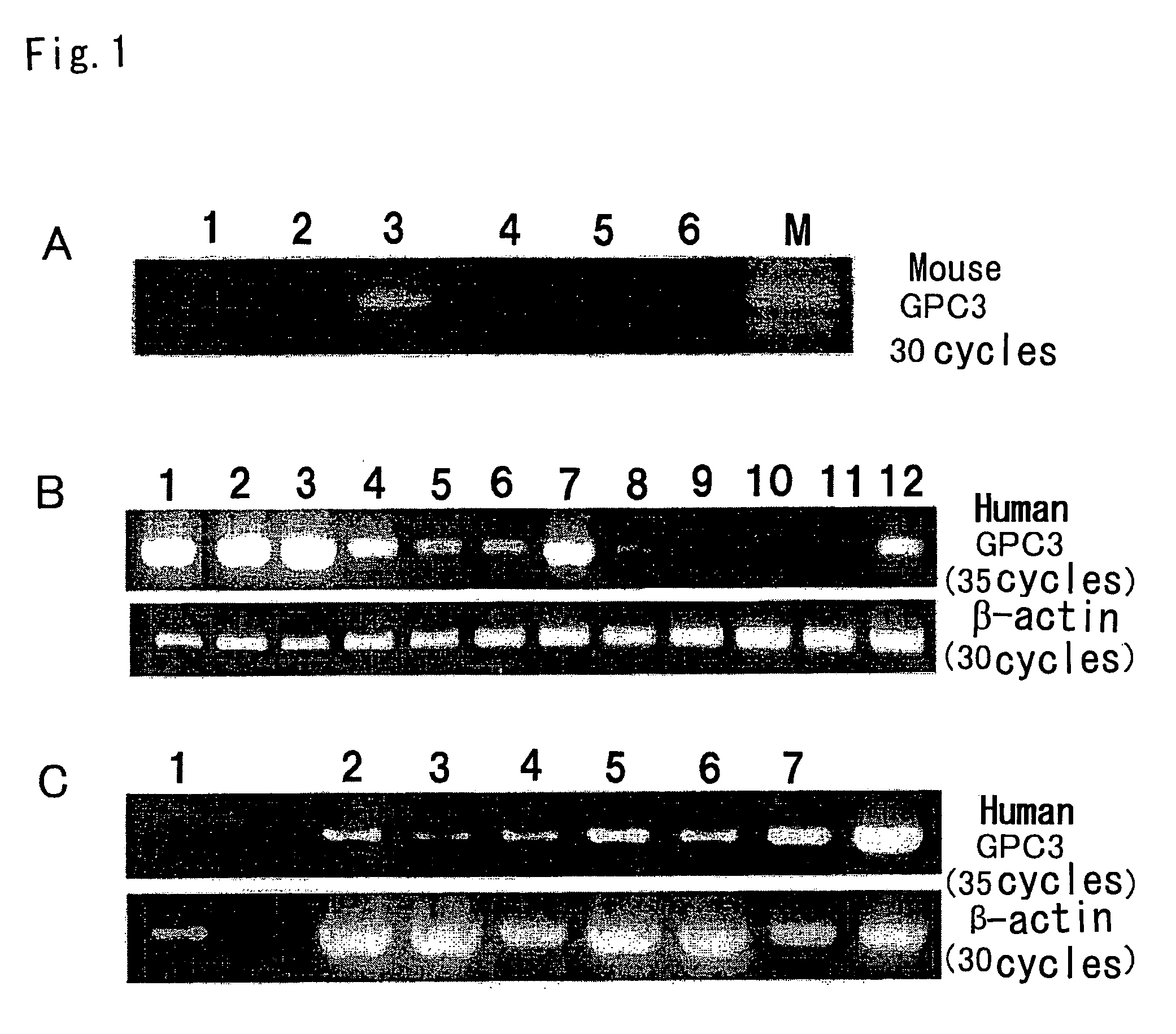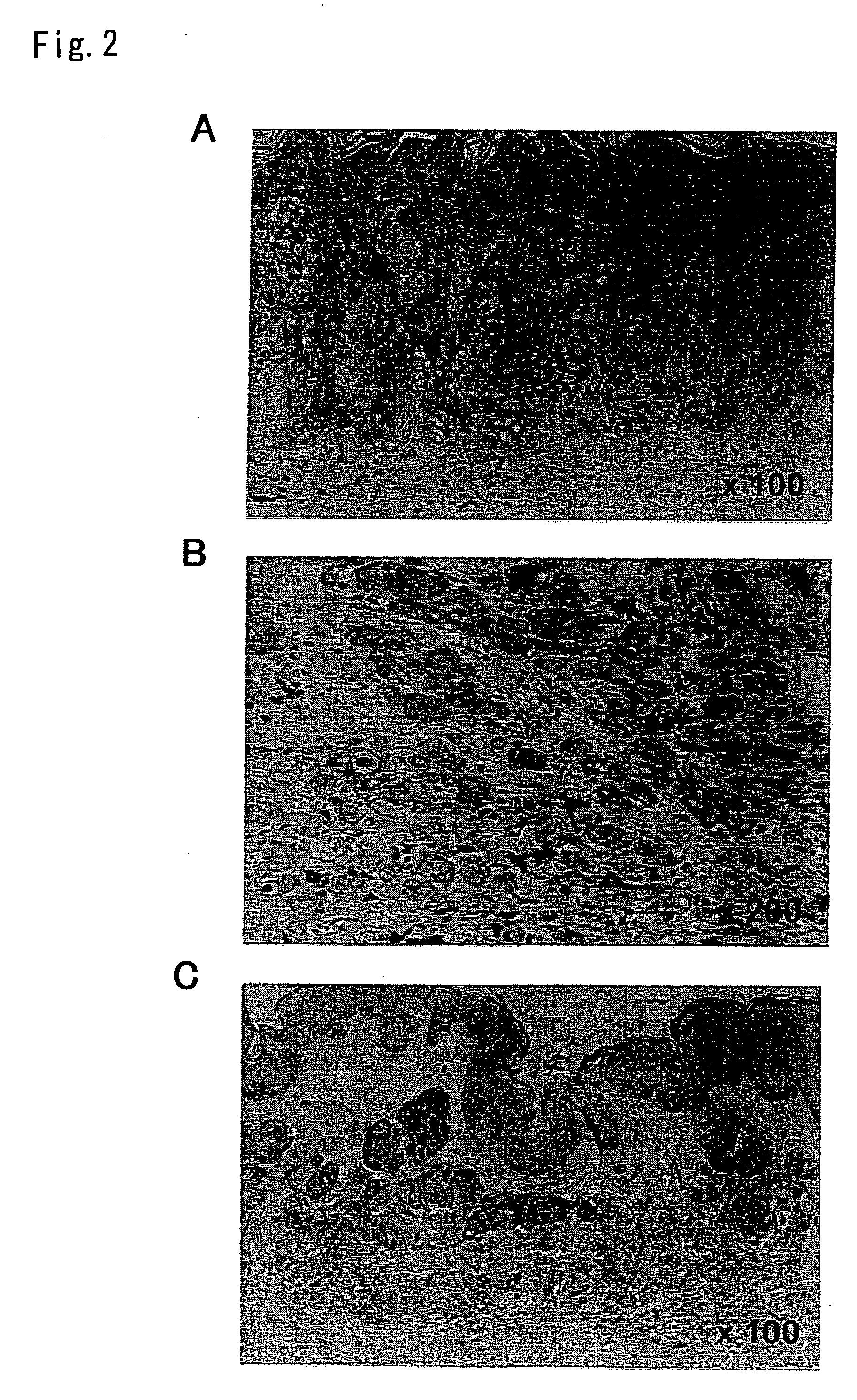Diagnositic Agent for Malignant Melanoma
- Summary
- Abstract
- Description
- Claims
- Application Information
AI Technical Summary
Benefits of technology
Problems solved by technology
Method used
Image
Examples
example 1
GPC3 mRNA Expression in Mouse Cell Lines
[0050]GPC3 mRNA expression was examined by reverse transcriptase-PCR (RT-PCR). MH129F, MH129P, and MH134 mouse cell lines were obtained from the Cell Resource Center for Biomedical Research, Institute of Development, Aging and Cancer, Tohoku University. EL4, Colon26, and B16 were donated by Dr. M. Ogawa of Kumamoto University.
[0051]RT-PCR was performed according to a known method (e.g., Nakatsura T. et al., Biochem. Biophys. Res. Commun. 281, 936-944 (2001)). Mouse GPC3 gene-specific PCR primers capable of amplifying a 500-bp fragment were designed. RT-PCR reaction was performed using the primers, and it consisted of 5 minutes of initial denaturation at 94° C. followed by 30 amplification cycles at an annealing temperature of 58° C. The GPC3 PCR primer sequences used herein were sense:
sense:5′-ACGGGATGGTGAAAGTGAAGA-3′(SEQ ID NO: 1)andantisense:5′-GAAAGAGAAAAGAGGGAAACA-3′.(SEQ ID NO: 2)
[0052]The mouse cell lines were compared in terms of GPC3 m...
example 2
GPC3 mRNA Expression in Human Melanoma Cell Lines
[0053]PC3 mRNA expression was examined by reverse transcriptase-PCR (RT-PCR). G361, CRL1579, SK-MEL-28, HMV-I, and HMV-II melanoma cell lines were obtained from the Cell Resource Center for Biomedical Research, Institute of Development, Aging and Cancer, Tohoku University. 526mel and 888mel were donated by Dr. Y. Kawakami of Keio University. Moreover, Ihara, MeWo, and colo38 were donated by Dr. T. Kageshita of Kumamoto University. Furthermore, cultured human epidermal melanocytes, HEMn, were purchased from KURABO (KURABO INDUSTRIES LTD.).
[0054]RT-PCR was performed according to a known method (e.g., Nakatsura T. et al., Biochem. Biophys. Res. Commun. 281, 936-944 (2001)). Human GPC3 gene-specific PCR primers capable of amplifying a 939-bp fragment were designed. RT-PCR reaction was performed using the primers, and it consisted of 5 minutes of initial denaturation at 94° C. followed by 30 amplification cycles at an annealing temperature...
example 3
GPC3 mRNA Expression in Human Melanoma Tissues
[0056]Similarly, GPC3 mRNA expression in normal human skin, human melanoma, and human pigmented nevus tissues was examined. Specimens used herein were donated by Dr. T. Kageshita, for which informed consent had been obtained from donors treated at the Department of Dermatology, Kumamoto University School of Medicine. As a result, no GPC3 mRNA expression was observed in normal skin, but it was observed in most melanoma tissues. Furthermore, GPC3 mRNA expression was also observed in congenital pigmented nevus.
PUM
 Login to View More
Login to View More Abstract
Description
Claims
Application Information
 Login to View More
Login to View More - R&D
- Intellectual Property
- Life Sciences
- Materials
- Tech Scout
- Unparalleled Data Quality
- Higher Quality Content
- 60% Fewer Hallucinations
Browse by: Latest US Patents, China's latest patents, Technical Efficacy Thesaurus, Application Domain, Technology Topic, Popular Technical Reports.
© 2025 PatSnap. All rights reserved.Legal|Privacy policy|Modern Slavery Act Transparency Statement|Sitemap|About US| Contact US: help@patsnap.com



